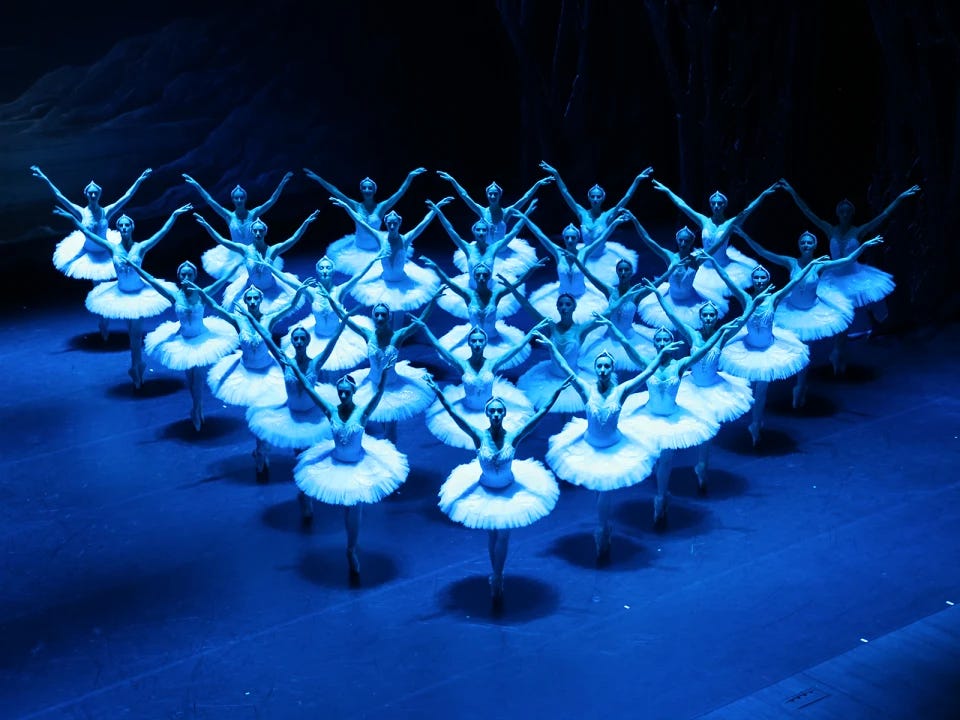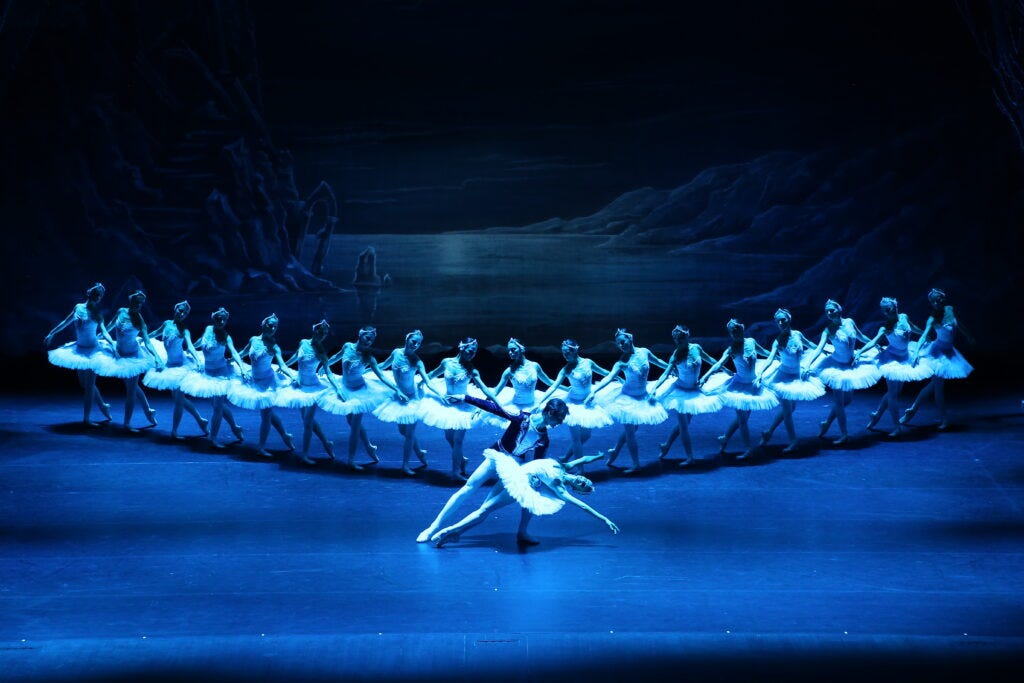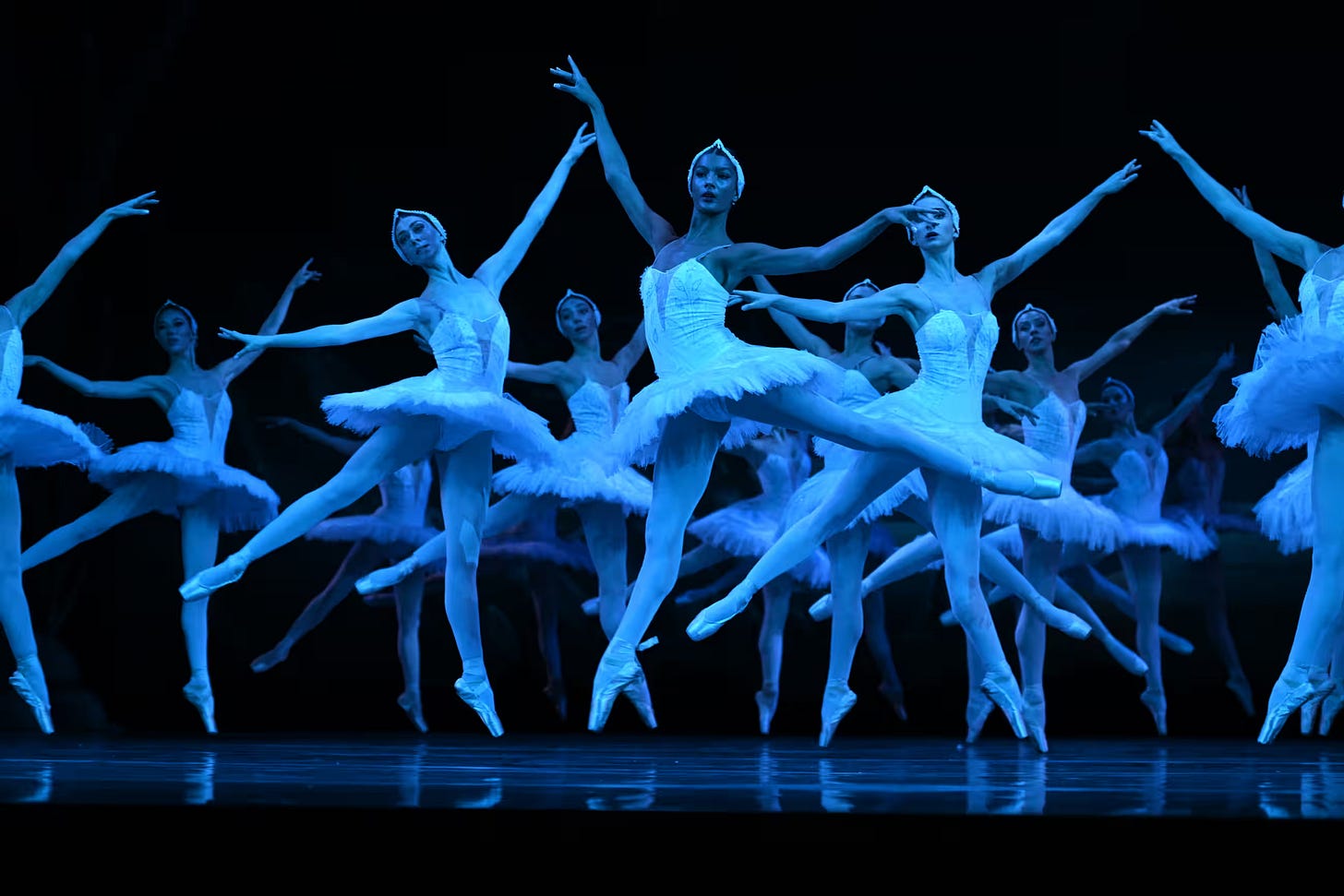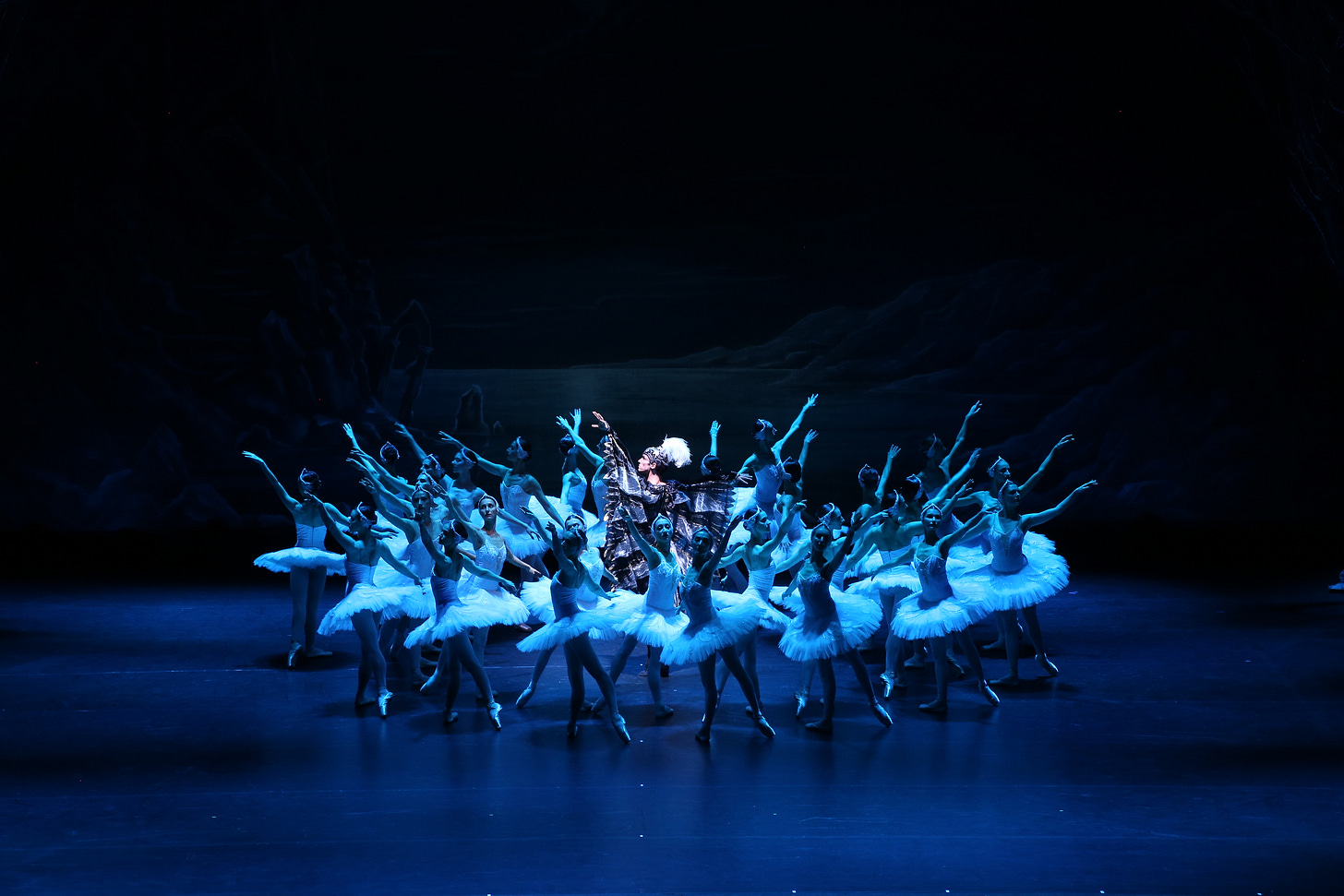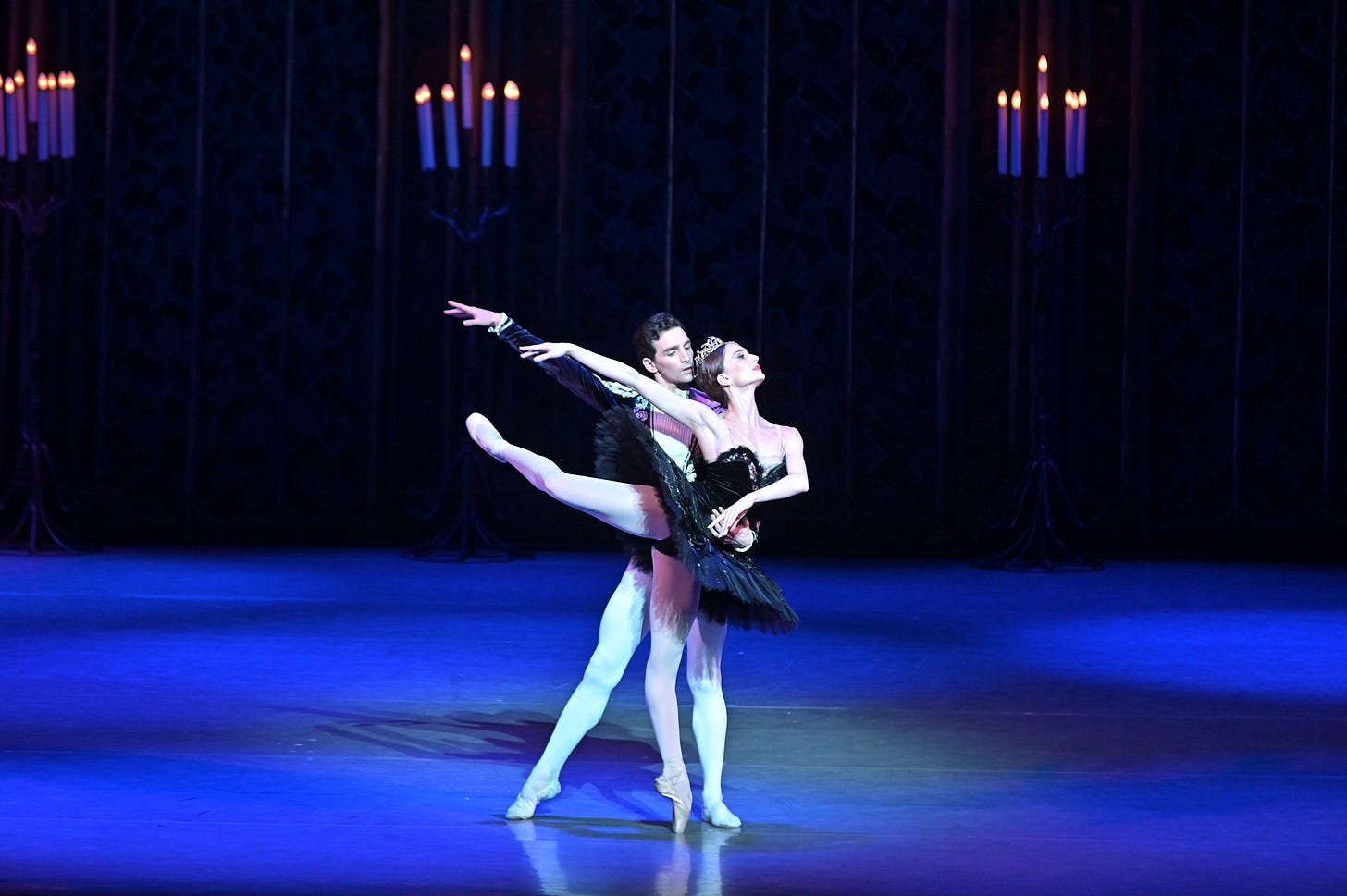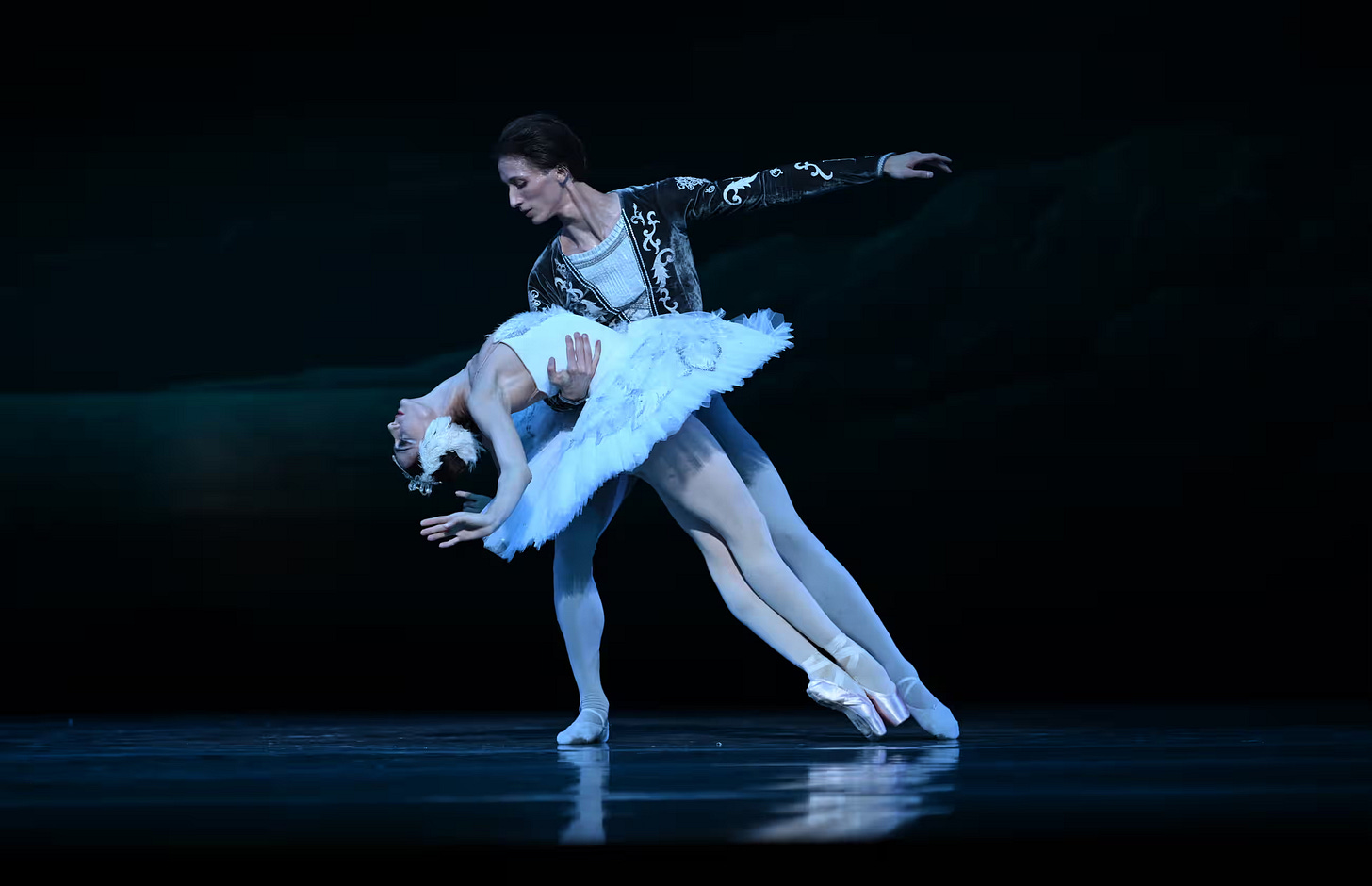State Ballet of Georgia - Review: Swan Lake
State Ballet of Georgia perform Swan Lake at the Bord Gais Theatre, Dublin
In the autumn of 2024, a first occurred on the ballet scene when the State Ballet of Georgia made its first tour to London and to Dublin, performing the iconic classic Swan Lake. Founded in 1849 and based at the Tbilisi State Opera and Ballet Theatre, first opened in 1851, this company is not unheard of, but, before this tour, they had yet to perform in the English capital. Since the Russian invasion of Ukraine over two years ago, the Bolshoi and Mariinsky Ballet companies have left voids in the touring and guesting slots in the west after their contracts were terminated in response to the war. Now, the national companies of former satellite states of the Soviet Union are looking to fill those empty slots and they’ve made progress. In October, the National Ballet of Ukraine had its first tour to the United States and in December 2025, they will perform their ballet The Snow Queen at the Baden-Baden Festspielhaus in Germany (a slot left empty by the Mariinsky).
Now, here come the Georgians, a country that is also facing conflicts with Russia as Russian interference rigged their recent elections and has been stalling their attempts to join the EU, which has sparked protests in the capital of Tbilisi. Georgia has always had its fair share of talented ballet artists, whose names remain big in the history books. Among the most famous are George Balanchine, the father of American Ballet, who was born as Georgiy Balanchivadze in Russia in 1905 to a Georgian father and a Russian mother; Vakhtang Chabukiani, the celebrated principal dancer of the Kirov Ballet in the 1930s and 1940s, who later returned to Georgia and became chief dancer and choreographer of the national company; brother and sister David and Maia Makhateli (the former was a principal dancer with the Royal Ballet and the latter is currently a principal dancer of the Dutch National Ballet), and the State Ballet of Georgia’s Artistic Director Nina Ananiashvili, world-renowned Prima Ballerina of the Bolshoi Ballet and American Ballet Theatre.
Ananiashvili was one of the great ballerinas of her generation with a career that has spanned over 30 years. She returned to Georgia in 2004 and that same year, she was appointed Artistic Director of the national company, a position she has held since, and continued dancing, only stopping in recent years. She has worked hard in revitalising the company as, under her directorship, the works of Sir Frederick Ashton, George Balanchine, August Bournonville, Alexei Ratmansky, Jiří Kylián, Possokhov, Trey McIntyre and Stanton Welch have been introduced to the repertoire.
From the 20th to the 24th November, the State Ballet of Georgia performed at the Bord Gáis Theatre in Dublin. I attended the evening performance on Friday the 22nd November. For this tour, Ananiashvili carried the same aim as the Ukrainian companies - to prove that the Georgian company can match the level of the Russian companies and to distinguish the company’s own identity.
When I attended this performance, I was not sure what I would see. I have seen many productions of Swan Lake and I was under the impression that this would be something quite special. Unfortunately, I was wrong. Ananiashvili did not quite succeed in her mission and the overriding reason was the production. This version was staged by Ananiashvili and Alexei Fadeyechev, former principal dancer and Artistic Director of the Bolshoi Ballet. Although the programme also credits Marius Petipa and Lev Ivanov, there is very little of Petipa and Ivanov to be found. This version is actually a rendition of the former Bolshoi version that was staged by Asaf Messerer after Alexander Gorsky’s rendition. Gorsky, who had been a dancer under Petipa, first staged Swan Lake at the Bolshoi in 1901, which was followed by several revivals. Messerer, a student of Gorsky, first staged Swan Lake at the Bolshoi in 1937 and then again in 1951. In 1957, his production was filmed with Maya Plisetskaya as Odette/Odile and Nikolai Fadeyechev (the father of Alexei Fadeyechev) as Prince Siegfried.
For their production, Ananiashvili and Fadeyechev retained most of the Messerer/Gorsky choreography and added some touches of their own, including the restoration of some the original 1895 features, most notably the presence of the character Benno and the absence of a court-jester. The ballet is staged in two acts rather than three. Unfortunately, one of the biggest problems is that this production is draped in Sovietism in terms of its stage direction and its choreographic style, and one word comes to mind when describing it - lacklustre. Not even the beautiful décor and costumes could save it.
As already mentioned, there is barely a shred of Petipa and Ivanov, or even so-called “After Petipa and Ivanov”, and this is especially apparent in the first scene of Act 1, where the choreography is by and after Messerer and Gorsky, but it did not leave much of an impression. The entrance of Prince Siegfried was similar to that in Yuri Grigorovich’s production for the Bolshoi, complete with a series of jétés and jumps, concluding on a pirouette; the Waltz was performed by the corps de ballet and Prince Siegfried, and the Pas de trois was made into a Pas de Quatre, performed by Prince Siegfried, Benno and two female soloists. Unfortunately, the choreography of the entire first scene was unimaginative and boring. This was only enhanced by the absence of the crucial mime scene where Siegfried’s mother arrives and scolds him for his partying and reminds him of the upcoming ball where he must choose a bride. This staging included the Soviet tradition of the Queen presenting her son with a crossbow as a birthday present and no mention of a ball or impending marriage.
There were also many cuts in the score, most of which were unnecessary and called for changes that did not work. For example, the finale of the first scene was cut: it ended with everyone existing at the end of the Dance with the Goblets and the curtain came down to make way for a short interval of several minutes while they changed the scenery. This only made the transition into the second scene too abrupt, leaving little to no connection to the first scene. The quality of the dancers in the first scene was mixed; the corps de ballet and the three soloists showed good technique, Benno had good buoyant jumps and the two female soloists of the pas de trois showed strong pointe work in their variations, but Daler Zaparov as Prince Siegfried was a bit of a disappointment. His performance was very lacking, especially in his jumps, which lacked strength and flight, but he somewhat made up for it with strong pirouettes, of which he managed at least four or five.
The second scene opened with the appearance of Von Rothbart and some of the Swan Maidens, followed by the arrival of Prince Siegfried, Benno and a group of hunters. While this is what Ivanov did and is a departure from the Soviet tradition of Siegfried going hunting alone, the presence of Benno and the hunters was not used to the full because they only appeared once and never appeared in the scene again, which made their accompanying Siegfried to the forest rather pointless. The staging of the swan dances was a mixture of “after Ivanov” and after Messerer and Gorsky. The corps de ballet and soloists of swans and were technically strong; Von Rothbart showed good height in his jumps and did well to present an evil presence, but none lit the stage more than principal dancer Laura Fernandez as Odette. Fernandez presented beautifully graceful arms and lines and strong technique. Though her acting was somewhat wooden (as was the case with almost everyone in the performance), she nevertheless gave a performance that was worthy of the applause she received.
The first scene of Act 2 had the national dances (except for the Spanish Dance) performed before the arrival of Odile and Von Rothbart. The national dances were nicely staged, especially the Mazurka, where a corps de ballet was led by a female soloist. The dance of the potential brides was also quite a nice edition with the women dancing en pointe and in different costumes. Afterwards arrived Odile and Von Rothbart, accompanied by the Spanish dancers, who performed their dance, making way for the Grand Pas de deux. Fernandez and Zaparov danced well together, with Zaparov proving to be a good partner to Fernandez; unfortunately, his performance still lacked in his variation. While Fernandez performed her variation well, it was disappointing to see the Grigorovich variation to one of the numbers from the original 1877 pas de six (or as a friend of mine calls it, the “happy hooker variation”) in use instead of the Petipa variation. Having Odile perform extra fouettés in her variation only detracts from the effect of the 32 fouettés en tournant, which Fernandez performed technically well, though she lacked a little bit of fire. Between the dual role, Fernandez was strong in both roles, but she was more an Odette than an Odile.
The final scene, however, was a huge disappointment: it was too short, it severely lacked drama and it retained the Soviet happy ending. As in Messerer’s staging, the opening dance of the swans was shortened to be barely two minutes long. Odette rushes in, followed shortly by Siegfried, who enters after the dramatic cymbal clashes on the soft melody and after finding Odette, the music transitions into the number from the original pas de six that several productions use as an extra adagio for Odette and Siegfried in the final act. This was followed by a very anti-climatic finale. When Von Rothbart enters, there is dancing instead of acting and the programme synopsis states that Rothbart, fully enraged, attempts to destroy Siegfried and Odette, but Siegfried fights him, overpowers him and kills him. Unfortunately, this was not what was delivered on stage. First of all, the timpani role and the climatic forte reprise of the theme were cut and it went straight into the second forte reprise. Second, there was no fight; instead, the Swan Maidens grouped around Siegfried and Odette and on the (un)climatic note, Siegfried lifted Odette in an athletic lift and all this overpowered Rothbart. Odette and the Swan Maidens surrounded him, Siegfried fainted (for unknown reasons) and then, the Swan Maidens and Rothbart (who was meant to have disappeared) exited the stage, leaving Odette dressed as a princess instead of a swan princess, now free of the spell, and the curtain closed on Odette and Siegfried embracing, leaving them to live happily ever after. The written description of the finale was more exciting than what was staged, but what was written in the programme synopsis could have been staged had more effort been put into the finale and had it been made up mostly of acting instead of dancing.
Overall, the evening was a bit of a let-down. There is no question that the dancers of the State Ballet of Georgia have plenty of potential because they showed that they are technically accomplished, though the overall performance was lacking fire and vitality. The overriding reason was because this outdated production does not do them any justice, especially since it is a Soviet version from the 1950s that has more than aged. This is a fine ballet company, but they seriously need a new Swan Lake, preferably one that is not rooted in Sovietism. While I will not be rushing to watch this production again, I would be more than happy to see the State Ballet of Georgia perform again. The introductions to companies from former satellite Soviet states is giving us more viewing options and it’s always refreshing to be introduced a company one is not familiar with.






